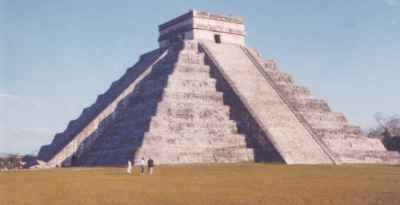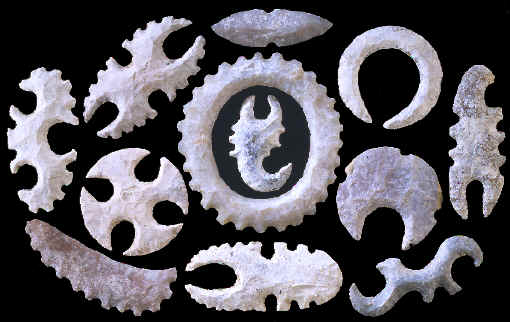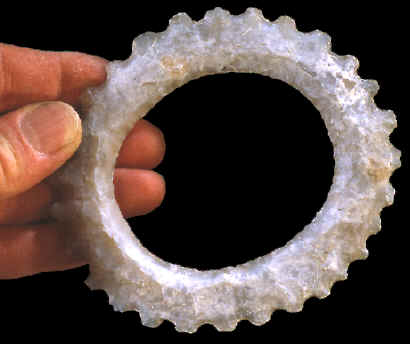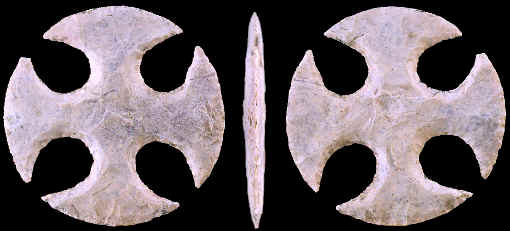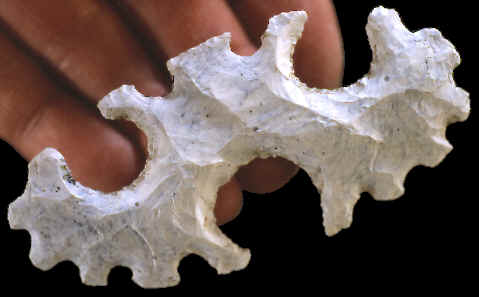|
|
|
An example of just how intense stone tool production was at the Colha workshop sites in northern Belize was shown by Erwin Roemer (1980 thesis). He counted all the flakes, measuring 1 3/16 inches (3 cm) and above, from a test excavation on a blade workshop at Colha. The excavation was 2 meters square and 1.5 meters deep. The waste flakes, larger than 1 3/16 inches (3 cm), retrieved from this excavation exceeded 21 million! |
|
|
Eccentrics were produced on Mayan lithic workshop sites by specialized craftsmen. The average Maya citizen probably never had any reason to own or handle them. Eccentric flints were apparently used only within the elite upper class of Maya society. |
|
|
|
|
Many eccentrics have been found on Maya sites by credible scientific institutions. A lot of the data that has been recovered from those excavations can be read in published reports. That information indicates that eccentrics are almost always found in a ceremonial context where they were place as the result of a ritual event. |
|
|
Eccentric flints are almost always found in caches as votive offerings to Maya gods. They are found as dedicatory caches in different locations on platform temple mounds near altars, stairs, construction fill and stela. They are also found in royal tombs. |
|
|
|
|
In Maya culture the two main types of caches are utilitarian and votive. Utilitarian caches were used for either protection or storage and the intent was retrieve them for later use. Votive caches are purely ceremonial offerings and were left as offerings to one or more of the Maya gods. |
|
| CONTINUE ON TO PAGE FOUR | |
|
"REFERENCES"
1946,
"The Ancient Maya," by Sylvanus G. Morley, page 436. |
|
